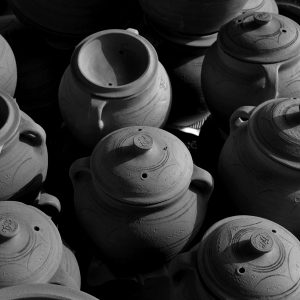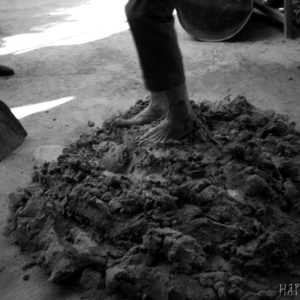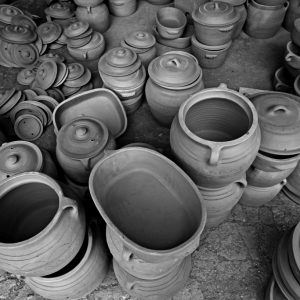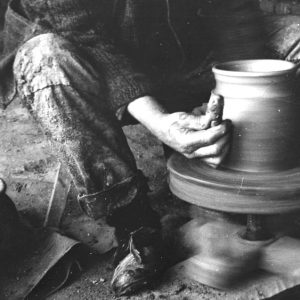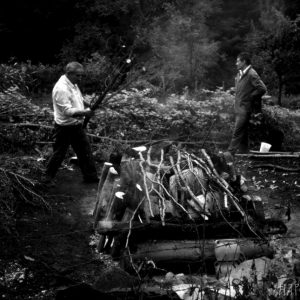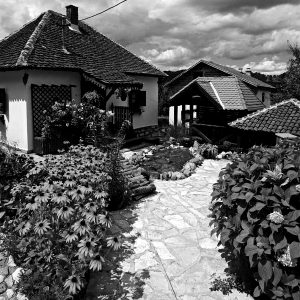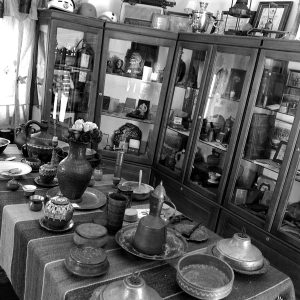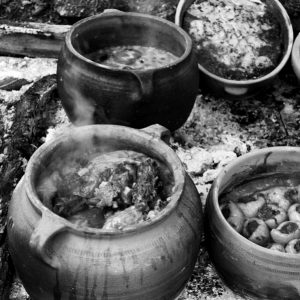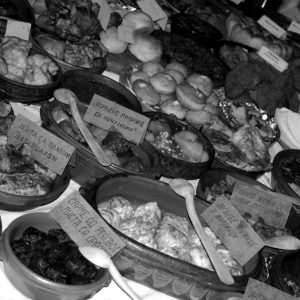The role of the village of Zlakusa in preserving traditional culture and development of tourism in the Southwestern Serbia
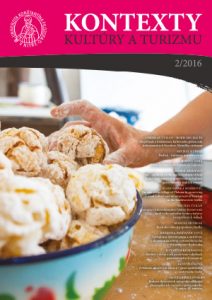
Introduction. The preservation of folk customs and a traditional culture are important for the formation of the Serbian national identity. Every region and every village in Serbia has its own customs and traditions, which are transmitted from “generation to generation”. Folklore practice, as a part of intangible cultural heritage, is present only in the rural areas of Serbia. It is not included in the normative and institutional frameworks, so the Law on Cultural Heritage (Official Gazette of the Republic of Serbia, 71/94) has not recognized it. Since intangible cultural heritage reflects the national identity of the nation, the greatest significance for its recognition at the national level has the UNESCO Convention for the Safeguarding of the Intangible Cultural Heritage. By ratifying the Convention in 2010, the Ministry of Culture and Information of the Republic of Serbia has formed a network for the preservation of intangible cultural heritage at the Ethnographic Museum in Belgrade. Currently, there are 27 registered elements on the National List of Intangible Cultural Heritage, including the pottery from the village of Zlakusa. The production of traditional pottery in Zlakusa has been attracting the attention of scientists since 1900 (PANTIĆ 2013:83). It is well known by its specific technological process which is unique in Serbia and throughout Europe as well. Modern research (BJELJAC 2014:11) stresses its outstanding tourist attraction. As a part of the tourist area of Southwestern Serbia it is presented through the cultural and event tourism on the tourism market.
The paper presents the development and position of traditional craft pottery through history, which is the subject of this paper. The aim of the paper is to highlight the importance of traditional crafts and its role in the development of tourism in Southwest Serbia.
Study area. The village of Zlakusa is situated in the southwestern part of the Republic of Serbia on the territory of the City of Užice, among 43o47’34" north latitude and 19o57’03" eastern longitude. It is located at the foot of limestone hill Gradina, on the right side of the Đetinja river valley, 13 km east from Užice. According to the last Census, in 2011, 671 people lived in Zlakusa in 224 households. In contrast to the mountainous hinterland, the inhabitants of the village of Zlakusa are engaged in agriculture and animal husbandry as well as in handicrafts.
Thanks to its geographical location, the residents of Zlakusa were known as good merchants, through history, and the village was located on the merchant map of Serbia. In the past, trade caravans used to pass near the village and they connected Dubrovnik in the west and Niš in the east through the valley of the river Đetinja. Nowadays, the railroad Belgrade-Bar (Montenegro) passes close to the village, as well as modern roads that connect the Pannonian Plain and central Serbia with the Adriatic coast and Bosnia and Herzegovina. The affirmed tourist mountain centers (Tara, Zlatibor, Mokra Gora and Zlatar) can be reached by these roads. The village has a railway and bus stop now due to favourable traffic conditions. Thanks to the network of roads the village is well connected with Užice, the largest urban area in this part of Serbia. Užice is an administrative center and seat of the Zlatibor County and tourist region of Western Serbia.
The development of pottery craft. By the beginning of the XX century, the mountainous region of Southwestern Serbia was known as “Serbian Siberia”. In this passive and isolated part of Serbia, difficult living conditions often forced rural people to engage in additional professions. Mainly, it was craft profession, including the most popular pottery craft. In six villages nearby Užice (Zlakusa, Potpeć, Roge, Vrane, Kučin and Džurovo) the pottery craft was developted. Potters from these villages were known by hand-made clay dishes for preparing food. The Serbian households used them according to the sources from XIX and XX century (PANTIĆ 2013:80). During the XIX century, potters made clay dishes exclusively for their own needs. However, between the two World Wars the production exceeds the boundaries of home-made production and began to grow (BLAGOJEVIĆ 1974:356). Clay dishes were made upon order. Due to high demand and consumption, potters sold their products at fairs and markets in Užice and surrounding area.
At the beginning of the XX century, the changes brought by industrialization were visible in Užice and the surrounding villages. The desire for a new and more comfortable life in towns has influenced many rural households to increasingly use practical “factory dishes” on a daily basis. These changes have resulted in reduced production of clay dishes. In many villages, potters abandoned their craft but not in Zlakusa. Patriarchal mannered, resourceful and clever potters from Zlakusa have adapted their production to the new conditions and trends. They have modernized the design of dishes and adapted their use to the new “factory stoves”.
After the construction of industrial facilities in the valley of the river Đetinja, in 50´s of the XX century, the number of potters in Zlakusa gradually decreased. Working population from Zlakusa found well-paid jobs in the nearby factories, but did not abandon their craft (BLAGOJEVIĆ 1974:363). Pottery became once again the business of potters to satisfy their own needs. PANTIĆ (2013:79) points out that “the awareness of the preservation of the old crafts is especially pronounced among the local people from Zlakusa”. Perhaps this is the main reason why Zlakusa is the only village in Serbia in the XXI century where the production of clay dishes is preserved in a traditional way.
Previous studies. Research points out that the production of ceramics has a long tradition and its roots date back to the distant past. According to the method of preparation it is similar to the Romanized old Slavs ceramics. However, the scientific public disputes over the question: Is it a way of the production which was brought from the homeland of Slavs and accepted by the indigenous population or not (ĐORĐEVIĆ 2011:49)?
The first research from the beginning of the XIX century referred to the historical development of pottery. JOKSIMOVIĆ (1909:485-497) has researched the development of pottery in the village of Roge, and PERUNIČIĆ (1936:42-47) in Zlakusa. The most detailed research of the origin of pottery in the villages nearby Užice, with an emphasis on Zlakusa, has been given by BLAGOJEVIĆ (1974:327-363). In her above mentioned research, the author points to the connection of Užice national ceramics with the medieval Slavic ceramics (1974:359).
The most extensive field research (archaeological and ethnographic) was conducted by the National Museum of Užice, in 50’s and 70’s of the XX century. The studies have shown that the roots of Užice folk pottery date back to prehistory and they are associated with the Illyrian tribe Parthini. At the end of the IV century BC the Balkan Peninsula were inhabited by the Celts, who introduce a pottery wheel in the production process. The tradition of manufacturing was further transfered to the Romans (I century) and the Slavs (VI century). The impact of Slavic ceramics on the Serbian medieval pottery ceramics, on which contemporary national ceramics of Užice relies, can be visible today only in Zlakusa.
In the XXI century the interest of domestic and world public for the village of Zlakusa is increasing. At the state level, a team was formed for the project implementation “The villages Zlakusa and Potpeće and their surroundings”. The team members of the Central Institute for Conservation, the Ethnographic Institute SANU, Belgrade natural sciences museum and the National Museum from Užice explore the natural and cultural heritage of the village of Zlakusa and the nearby village of Potpeć. Modern researchers (ĐORĐEVIĆ, 2011; GÖKçE et al. 2014:46-49; PANTIĆ & DRNDAREVIĆ, 2012; PANTIĆ, 2013:77-88; TERZIĆ et al., 2015:102-120) studied Zlakusa mainly from the technological, ethnological, archaeological and cultural aspects. Unlike them, BJELJAC et al. (2014:195-217; 2015:53-61) studied Zlakusa from the aspect of tourismology. Applying the methodology Hillary du Cross, in the evaluation of intangible cultural heritage in Serbia, these researchers point out that Zlakusa belongs to the cultural goods of high value (54 points).
Clay dishes manufacturing technique. The archaic feature of Zlakusa ceramics is in the technique which is more than 400 years old, made on a slow wooden hand wheel (GÖKçE et al. 2014:46), and fired on open fire. The basic raw materials for making dishes are processed clay and mineral calcite (CaCO3). The highest quality is obtained from clay mine in the village of Vranjani and a calcite from the mine in the village of Rupeljevo. After the delivery of raw materials from the mines, the process of their treatment begins. In the first step the clay is chopped up, and then placed in a pot where it stays for the next 24 hours to soften in the water. The final step is the spreading of clay on a big cloth in order to treat it by foot (Figure 3). Before mixing with clay, calcite is first baked and then crushed. Then the crushed calcite is sieved through a sieve, until it gets the appearance of fine sea sand. Mixture (“dough”) of clay and calcite is used for making dishes. The ratio of clay and calcite can be different and depends on the size of the product to be made. For making smaller dishes the ratio is 50:50%, but as the process of making bigger dishes includes more calcite the ratio than is 40:60%. In the next phase, the process of making dishes on the wooden hand wheel begins. ĐORĐEVIĆ (2011: 47) points out three main reasons for the traditional use of hand wheel for making clay dishes: 1) the products for preparing food are made on the wooden wheel only; 2) the use of hand wheel is connected with the areas where clay is rich in calcite; and 3) the weight of the clay mass which is used for making pottery.
The process of making dishes on a hand wheel has eight stages: 1) making the bottom of the dish and building of walls on a hand wheel; 2) treatment of the walls; 3) treatment of the outside wall; 4) forming a shape; 5) placing handles; 6) preparations for decorating a dish; 7) decorating the dish; and 8) the final appearance of the dish (for more detailes see https://www.grncarija.rs/izrada.htm).
After the production, the phase which involves drying dishes in the sun or draft starts. Drying takes from 2 to 10 days and depends on the weather conditions and size of dishes. Then, there is a finishing process and dishes are dried at the temperature which ranges from 100 to 200oC. This process dries all chemically bound water, which is especially important for the next phase – “baking dishes”.
Baking dishes is traditionally done on an open fire, in the masters’ courtyards. It lasts from one hour to two hours and a half, on the fire from 700 to 800oC. Masters maintain the necessary fire and a temperature. A sign that the dishes are sufficiently baked is white-gray color which is obtained by glowing.
Tourism village. Sofia Bunardžić, an academic painter-ceramist from Užice, recognized the importance of the art of making clay dishes. In order to renew, adjust and revive the preserved tradition and present it to the world Bunardžić has initiated the manifestation International Colony of Fine Art Ceramics “Zlakusa” – Užice. The first colony was organized in 1996 as a part of authors project “Ceramics – Zlakusa”. The organization of this traditional event falls within the competence of the Association “Ceramics-Zlakusa” (DRNDAREVIĆ 2010:38). Thanks to the sponsorship of the City of Užice and the Ministry of Culture of the Republic of Serbia the colony is always held every year within the period from 1st to 11th of August. Every year, one pottery household is a host of the colony, which means that every year the colony has a new host.
A large number of artists (300) has participated in colony workshops and they come from all continents (GÖKçE et al. 2014:49). Tourists can participate or attend colony workshops. Not only can the guests participate in the production of dishes, but they can also take or buy them from a colony host (TODOROVIĆ, PAVLOVIĆ 2009:413).
The colony “Ceramics-Zlakusa” has aroused the interests of both the national and international public. The handicrafts, archaeologists, ethnologists, art critics, art photographers, architects, and an increasing number of domestic and foreign tourists as well are interested in this event. We can say that the colony has initiated the development of event tourism in Zlakusa.
However, the development of Zlakusa as a tourist destination is linked to 2005, when the ethno-park “Terzića avlija” (BJELJAC et al. 2014:206), a unique open sky museum was established. The founder and owner of the park is Saša Drndarević, who returned to Zlakusa with his family after 20 years of military service in Belgrade. The idea of converting his grandfather’s farm into a museum began in 2005.
With the construction of the ethno-park “Terzića avlija” in Zlakusa, the development of rural tourism began (BJELJAC 2014:206). The park is also the seat of the Ethno-association “Zavičaj”. This non-profit organization was formed with the aim of preserving the tradition, fostering the culture, customs, traditional crafts, music, folklore, passing down tradition to younger generations, protecting environment and developing rural tourism. Ethno-association “Zavičaj” has over 200 members who participate in the work of the Association Departments (Department of Folklore for Children, Department of Folklore for Adults, Department of Old crafts, Department of Ecology, Department of Literature and Arts and the Department for Rural Tourism) (DRNDAREVIĆ 2010:26). In order to preserve the tradition and promote the village in the tourist market, Ethno-association “Zavičaj” is the organizer of numerous events that take place in the ethno-park “Terzića avlija”, as well as of other cultural events in Zlakusa, Užice and the County of Zlatibor.
The place where all events take place in Zlakusa is the Ethno-park “Terzića avlija”. It represents a typical rural tourist household of Užice suburban district, where old houses and gardens can be seen. This unique complex consists of several parts as follows. The accommodation consists of the oldest house (1907) converted into apartments (Figure 6). In the museum there is a permanent exhibition of the old Serbian school, then a number of historical artifacts from the Roman and Ottoman period as well as the exhibits witnessing the establishment, development and disintegration of former Yugoslavia (Figure 7). In the gallery- library there is the permanent exhibition “Three Centuries of pottery in Zlakusa”. The library has over 4,000 titles available to tourists. The traditional craft products can be bought in the gift shop as well as various handmade crafts and art works.
The summer stage is a place where many cultural events are held (concerts, plays, literary evenings and promotions). The numerous events are held within the complex (“Zlakusa in songs and dances”, “Sing full yard”, “Serbian spinning-Bee”, “Easter concert”, “Užice bicycle rice” etc.). The most important regional event in which the ethno-park is involved is the “Night of Museums”. This event enables the museum to follow the contemporary cultural events and represents itself as an important and unique segment of the tourism market.
For organized tourist visits the ethno-park offers the possibility of organized lunches, presentation of pottery crafts, visit to pottery households, mini folklore concerts of Ethno association “Zavičaj”, presentation of traditional costumes, organizing smaller seminars etc. However, the tourist offer of the ethno-park “Terzića avlija” cannot be imagined without the hospitality part. Guests of the park can taste the dishes prepared in a traditional way. It is well known that food prepared in these dishes has a remarkable taste and smell.
Preparation of traditional dishes is promoted in the context of cultural and artistic event “Autumn in Zlakusa” held since 1992. The participants in this event compete in the preparation and display of traditional dishes in clay dishes (Figures 8 and 9).
Since 2009 the International Pottery Fest is held within this event, when the masters of Zlakusa exhibit and sell their products (for more information see https://www.zavicaj.info/ manifestacije/jesen-u-zlakusi-loncarijada). In order to protect the product of a specific geographical origin, the potters from Zlakusa formed the “Potters Association – Zlakusa” in 2011. Products from the village of Zlakusa are now recognizable by its unique trademark (Cyrillic letter “З” (Z)).
Conclusion. Intangible cultural heritage as a part of the movable and immovable material cultural heritage increases its value, and thus enrich the tourist offer of a particular site. The pottery products from Zlakusa have been known on the Serbian market for a long time. They are linked to the practical items that are most commonly marketed as souvenirs.
Thanks to the idea of Saša Drndarević, who initiated the revitalization of the village, the old crafts and products from Zlakusa are well known around the world. From once-forgotten and unknown village, Zlakusa has become a tourist brand of Serbia for most tourists. It has been given the status of a tourist place and a place on the tourist map of Serbia. In the further tourism development, the Spatial Plan of the City of Užice will recognize Zlakusa as a tourist village.
The construction of the ethno-park “Terzića avlija” meant the start of the development of rural tourism in Zlakusa. As the most successful rural tourist household in Serbia, ethno-park has been awarded the highest honors in the field of rural tourism – “Tourist flower 2008”. The modern tourist offer of Zlakusa cannot do without the event “Ceramics-Zlakusa” and the presentation of traditional pottery craft. The commitment of the local population in the preservation of traditional crafts and development of cultural, rural and event tourism is confirmed by many tourists who come and visit Zlakusa. Tourismology research according to Hillary du Cross methodology ascertained that Zlakusa is a cultural property of high value, which contributed to be nominated for the inclusion on the UNESCO list of intangible cultural heritage.
Reference:
BJELJAC, Ž., TERZIĆ, A., ĆURČIĆ, N.: Tourismology valorization of intangible cultural heritage by Hillary du Cross method. In: Issues in Ethnology and Anthropology, 2014, 1, s. 195-217.
BJELJAC, Ž., TERZIĆ, A., LOVIĆ, S.: Intangible cultural heritage in Serbia as a tourist brand. In: Tourism business, 2015, 15(1), s. 53-61.
BLAGOJEVIĆ, N.: National Ceramics in Uzice.In:Proceedings of Uzice, 1974, 3, s. 327-363.
DRNDAREVIĆ, S.: Zlakusa: tourist village (tourist informant). Uzice 2010.
ĐORĐEVIĆ, B.: Three Faces of traditional ceramic production in Serbia. Belgrade 2011.
GÖKçE, E., YAYLA, Z., ÖZKAN, I.: Reviving Traditional Pottery Making in Zlakusa, Serbia. In: Ceramics Technical, 2014, 39, s. 46-49.
JOKSIMOVIĆ, Ž.: Uzice earthenware dishes. In: Serbian ethnographic anthology, 1909, 13, s. 485-497.
PANTIĆ, N., DRNDAREVIĆ, S.: Poterry in Zlakusa from the old handcraft to art (Zlakusa then and now).Uzice 2012.
PANTIĆ, N.: History of pottery craft in Zlakusa. In: Proceedings of Uzice, 2013, 37, s. 77-88.
PERUNIČIĆ, B: About making pots in Zlakusa near Pozega, Uzice. In: Special editions of the Ethnographic Museum in Belgrade, 1936, 6, s. 42-47.
RADŽI, M.N.I., ZAKI, S.A., SUBLI, S.M.H.S.: Between Tourism and Intagible Cultural Heritage. Procedia – Social and Behavioral Science, 2013, 85, s. 411-420.
TERZIĆ, A., BJELJAC, Ž., ĆURČIĆ, N.: Common Histories, Constructed Identities: Intangible Cultural Heritage and the Rebranding of Serbia. In: International Journal of Intangible Heritage, 2015, 10, s. 102-120.
TODOROVIĆ, M., PAVLOVIĆ, S.: Ethno park (outdoors museums) in tourism development of local, regional and national identity. In: Etno parkovi (muzeji na otvorenom) u funkciji razvoja turizma i lokalnog, regionalnog i nacionalnog identiteta. In: Territorial aspects of Serbia and neighboring countries development, 2009,1, s. 409-417.
*** The Law on Cultural Heritage. In: Official Gazette of the Republic of Serbia, 1994, 71.
www.zlakusa.com
www.zavicaj.info
www.grncarija.rs
www.keramika-zlakusa.org
www.turizamuzica.org
Kontakt:
Mr Slobodanka Marković
PhD student
Faculty of Geography
Studentski trg, 3/III
Belgrade, Serbia
E-mail: markovicsslobodanka@gmail.com

